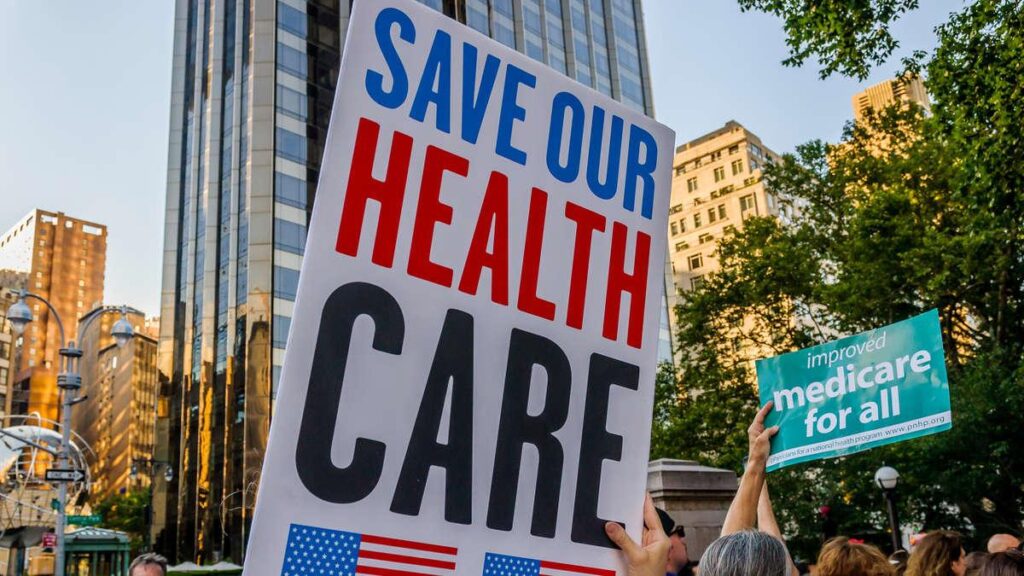A controversial healthcare proposal known as Trump’s “One Big Beautiful Bill” has raised alarms in Connecticut, where experts warn it could result in more than 100,000 residents losing their health insurance coverage. Critics argue that the plan, which aims to overhaul the current system, would significantly reduce federal funding and protections, jeopardizing access to vital medical services for many vulnerable populations across the state. NBC Connecticut investigates the potential impact of the bill and what it could mean for those relying on affordable healthcare in the region.
Impact of Trumps Health Bill on Connecticut Residents Access to Coverage
Residents of Connecticut face a potential healthcare crisis as the proposed changes under Trump’s health bill threaten to reduce coverage for thousands. Experts warn that over 100,000 individuals, many of whom rely on Medicaid and ACA marketplace plans, could lose access to essential health benefits. The bill’s emphasis on restructuring subsidies and rolling back Medicaid expansion is projected to increase out-of-pocket costs, making insurance unaffordable for low- and middle-income families across the state.
Key impacts include:
- Reduction in federal funding to Connecticut’s Medicaid program
- Elimination of protections for pre-existing conditions
- Increased premiums and deductibles for marketplace plans
- Potential rise in uninsured rates, particularly among vulnerable populations
| Category | Estimated Affected Individuals | Potential Coverage Change |
|---|---|---|
| Medicaid Recipients | 65,000+ | Loss of coverage / Reduced benefits |
| Marketplace Enrollees | 40,000+ | Increased premiums / Plan cancellations |
| Individuals with Pre-existing Conditions | 15,000+ | Denied coverage / Higher costs |
Detailed Analysis of Coverage Losses and Community Health Risks
The proposed legislation under Trump’s “One Big Beautiful Bill” threatens to eliminate health coverage for more than 100,000 residents in Connecticut, according to recent analyses. This substantial rollback disproportionately affects low-income families, seniors, and individuals with chronic illnesses who rely heavily on Medicaid and subsidized insurance plans. The anticipated coverage losses could spike the uninsured rate dramatically, reversing years of progress made under the Affordable Care Act. Health experts warn that cutting off access to preventive services and essential medications will exacerbate community health disparities and strain hospital emergency departments.
The community health risks associated with these coverage losses are multifaceted:
- Increased Hospitalizations: Without regular care, more residents will face emergency situations leading to costly hospital stays.
- Mental Health Decline: Reduced access to behavioral health services could heighten rates of depression, anxiety, and substance abuse.
- Public Health Threats: Gaps in treatment and vaccination coverage may facilitate the spread of communicable diseases.
- Economic Consequences: Healthcare cost shifts to uncompensated care burden local taxpayers and reduce workforce productivity.
| Population Segment | Estimated Coverage Loss | Primary Health Impact |
|---|---|---|
| Low-Income Adults | 65,000 | Loss of preventive care |
| Seniors (65+) | 20,000 | Chronic disease exacerbation |
| Children | 10,000 | Reduced immunizations |
| Disabled Individuals | 7,500 | Interruptions in ongoing care |
Policy Recommendations to Protect Vulnerable Populations in Connecticut
To mitigate the potential loss of health coverage affecting over 100,000 Connecticut residents, state lawmakers must prioritize targeted interventions for the most vulnerable groups. This includes increasing funding for community health centers, which serve low-income families and uninsured individuals. Additionally, expanding Medicaid eligibility and reinforcing enrollment assistance programs will be crucial to ensure continuous coverage for those at risk. Policymakers should also advocate for safeguards that prevent abrupt coverage disruptions, especially for seniors, people with disabilities, and those with chronic illnesses.
Key policy steps should incorporate:
- Enhanced outreach campaigns to raise awareness about alternative coverage options;
- Incentives for health care providers to accept Medicaid and subsidized plans;
- Strengthened partnerships between state agencies and nonprofit health organizations;
- Legislative measures aimed at preventing benefit reductions during economic downturns.
| Population Group | Recommended Action | Expected Impact |
|---|---|---|
| Low-Income Families | Expand Medicaid & Outreach | Reduce uninsured rate by 15% |
| Seniors & Disabled | Maintain Coverage Stability | Prevent care interruptions |
| Rural Residents | Increase Community Health Funding | Improve service access |
| Chronic Illness Patients | Facilitate Continuous Care | Lower hospitalization rates |
Wrapping Up
As the debate over Trump’s proposed ‘One Big Beautiful Bill’ continues, its potential impact on more than 100,000 Connecticut residents who could lose their health coverage remains a critical concern. Stakeholders await further details and responses from policymakers as the state grapples with the possible consequences of such significant changes to healthcare access.
